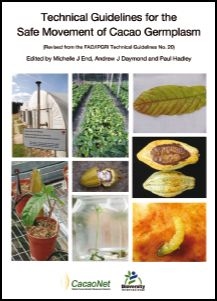Where we are today
Cacao production
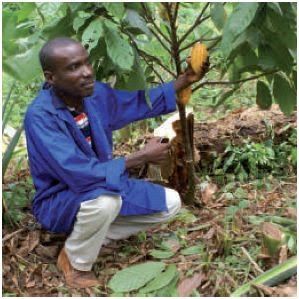
Cocoa is produced mainly on small-scale farms in developing countries across Africa, Asia and Latin America. The International Cocoa Organization (ICCO) estimates that 90% of world cocoa production comes from farms with only two to five hectares. According to the World Cocoa Foundation (WCF) there are 5-6 million cocoa farmers worldwide, and the number of people who depend upon cocoa for their livelihood is 40-50 million. Of the total production, 70% comes from Africa (mainly from West Africa), 19% from Asia and Oceania and 11% from the Americas.
Cocoa supply has been characterized by wide fluctuations in production with an average increase in demand of 3% per year (for the past 100 years). Industry experts predict the annual cocoa production in 2020 to rise by some 25%, or 1 million tonnes, to keep pace with the rapidly increasing demand for chocolate in the developing economies of Brazil, China, Eastern Europe and India. The estimated global annual market value of the cocoa crop, according to the ICCO, is between USD 8-10 billions, based on an annual production of 4 million tonnes and a monthly average daily price of cocoa beans between USD 2,264 to 2,359 per tonne. Compared to many other tree crops, there has been little investment in scientific research to improve cacao production, and the number of breeders is very low.
Most of the planting material is low yielding, often due to its high susceptibility to prevailing pests and diseases. However, preliminary evaluation of collections and farmers’ populations has shown the existence of wide variation for disease resistance and quality. Furthermore, only a few varieties have been selected for sensory quality aiming at the specialty cocoa market.
Genetic diversity of cacao
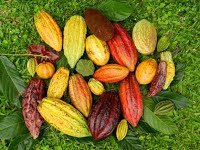
The genus Theobroma is divided into 22 species of which Theobroma cacao is the most widely known. These Theobroma species are found naturally in tropical lowland rainforests extending from the Amazon basin through to southern Mexico (18°N to 15°S). Cacao was domesticated at least 3000 years ago in Mesoamerica. The diverse use of cacao led to it being widely grown in Mesoamerica before the arrival of the Europeans, with further subsequent spread through South America and then globally in the early 18th century.
Hybridization between genetic groups, both natural and as a result of human actions, has resulted in novel hybrid populations and varieties.
Cacao genetic resources comprise the range of genetic variability that provides the raw material for breeding new and improved varieties to achieve a more economically sustainable cocoa production system, thus contributing to the economies of cacao producing countries.
Modelled species richness of genus Theobroma
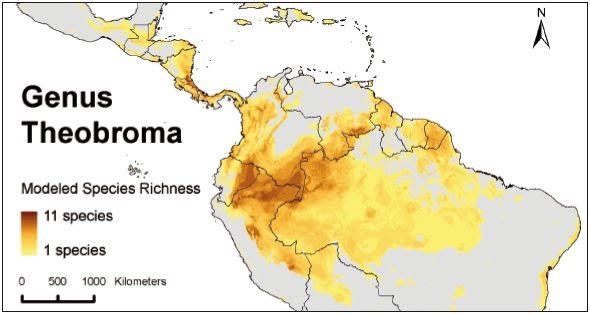
Conservation of diversity
Conservation and management of cacao genetic resources includes: targeted collecting, maintenance of field collections, effective characterization and identification, evaluation for important traits, information management, effective and safe exchange of germplasm and related information, and in some cases germplasm enhancement.
Since the early part of the 20th century, numerous missions have been undertaken to collect and conserve cacao ex situ in genebanks. The catastrophic impact of cacao diseases led to the expeditions to collect disease resistant germplasm from the Upper Amazon region in the 1930s, but in recent years more emphasis has been placed on systematic collections to capture genetic diversity.
There are many national collections in the Americas, the centre of origin, and in other cacao producing countries. Over 40 collection maintain in excess of 24,370 accessions of cacao.
Of these, two are international collections managed by the Cocoa Research Unit of the University of the West Indies (CRU/UWI), Trinidad and Tobago and the Centro Agronómico Tropical de Investigación y Enseñanza (CATIE), Costa Rica. These two institutes have entered agreements with the International Treaty on Plant Genetic Resources for Food and Agriculture (ITPGRFA) to maintain global collections of cacao genetic resources for the long term and to make this germplasm freely available to any professionally qualified institution or individual. This strong international commitment requires sustainable funding to ensure these resources are conserved in perpetuity.
Ex situ collections worldwide
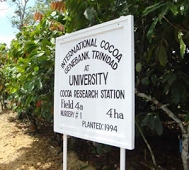
Although the international collections at CATIE and CRU/UWI have been supported by public and industry sources for many years, this support has not yet been secured for the long term.
Most collections have some degree of duplication, internally and with other collections. At the same time, only a few have a strategic safety duplication of their unique materials at a different site to guard against natural disasters. Misidentification of trees within collections, which can be as high as 30%, is also an important problem.
In surveys of collection curators, the main limiting factors they mention that hinder the use of germplasm in breeding, are:
- lack of information and knowledge (particularly evaluation) about the materials,
- constraints in accessing materials (quarantine and policies),
- relatively narrow genetic base available,
- few breeding programmes and breeders and
- lack of funding for research and breeding programmes. Current funding of most institutes is inadequate.
Improvement of cacao
Although scientific cacao breeding began more than 70 years ago, only about a quarter of all cacao farms consist currently of improved varieties.
Cacao has always been plagued by serious losses from pests and diseases, with estimates of losses as high as 30% to 40% of global production (USD 1-2 billion).
Scientists worldwide are looking for ways to produce cacao trees that can resist evolving pests and diseases, tolerate droughts, meet manufacturer’s needs, and produce higher yields. These programmes depend on the availability of substantial genetic diversity together with an understanding of how best to use it, and powerful new technologies, such as molecular genetics, genomics, proteomics and eco-geographical remote-sensing techniques, have increased the value of these genetic resources.
The preliminary sequencing of the cacao genome is a promising step in advancing breeders’ ability to deliver improved trees to farmers, and advances in informatics have also markedly increased the capacity to use, analyse and communicate related data and information.
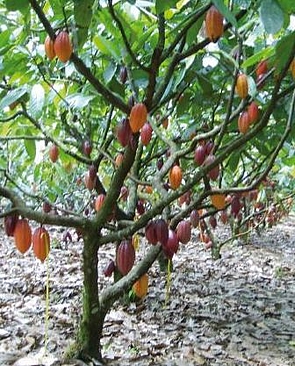
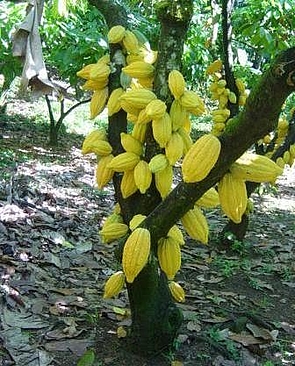
Movement of germplasm
Exchange of cacao germplasm and related information is an essential condition for use in research, plant breeding and agricultural development.
Although national and international genebanks hold a considerable range of cacao genetic diversity, access to these resources and information is often restricted by the lack of a clear legal and policy framework at institutional, national and regional levels. National laws that restrict access and use of plant genetic resources have emerged in many countries.
Partly as a result, current global arrangements for the exchange of cacao genetic resources rely heavily on the two international collections held by CATIE and CRU/UWI. With the exception of these collections, there is little transfer of germplasm between countries.
Movement of cacao germplasm brings with it the potential risk of transfer of pests and diseases. The risk is particularly acute when germplasm is moved between cacao-growing regions that have different endemic diseases. Currently the safe global movement of germplasm, including testing for the presence of viruses, is through the International Cocoa Quarantine Centre at the University of Reading UK, (ICQC,R). The USDA/ARS facility in Miami, USA, offers quarantine facilities for regional transfers.
It is essential that users have access to the latest information highlighting the risks associated with pests and diseases and recommendations on appropriate quarantine measures. The 2011 updated Safe Movement Guidelines for Cacao, compiled under the auspices of CacaoNet (available here), includes descriptions and information on an extensive range of pests and diseases and information on quarantine measures.
Information on diversity
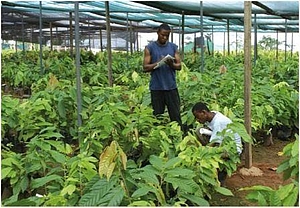
Providing access to important information about cacao germplasm is an essential component of the Global Strategy. The main purpose of conserving the genetic diversity is so that it can be used, but a key factor in its utilization is the availability of related useful data.
Information on morphology, evaluation, origins and locations of a large number of cacao varieties (genotypes) can be found in the International Cocoa Germplasm Database (ICGD), developed for the cocoa community at the University of Reading, UK, and genetic information is available online through TropGENE, hosted by CIRAD in France. ICGD and TropGENE contain information related to clonal material or varieties. And although they link some information to individual trees or accessions, they are not designed to be germplasm management tools.
Genebank curators recognize the need for information management systems to manage their collections and to provide access to data and images. The two international collections have adequate systems, but a lack of local expertise, time and funding are major constraints that prevent progress in many other collections. The resulting lack of adequate documentation systems for cacao collections restricts the further development of a global cacao genetic resources information system.
Global Strategy
- Abstract
- Preface
- What needs to be done?
- Where we are today
- Where we want to go
- How can you help?
- Partners and acknowledgements
- References
DOWNLOAD
The entire Global Strategy document can be downloaded here: Cacaonet Global Strategy - Full document (PDF 2.4Mb)
A brochure of the Global Strategy can be downloaded here: CacaoNet Global Strategy - Brochure (PDF 2.5Mb)

